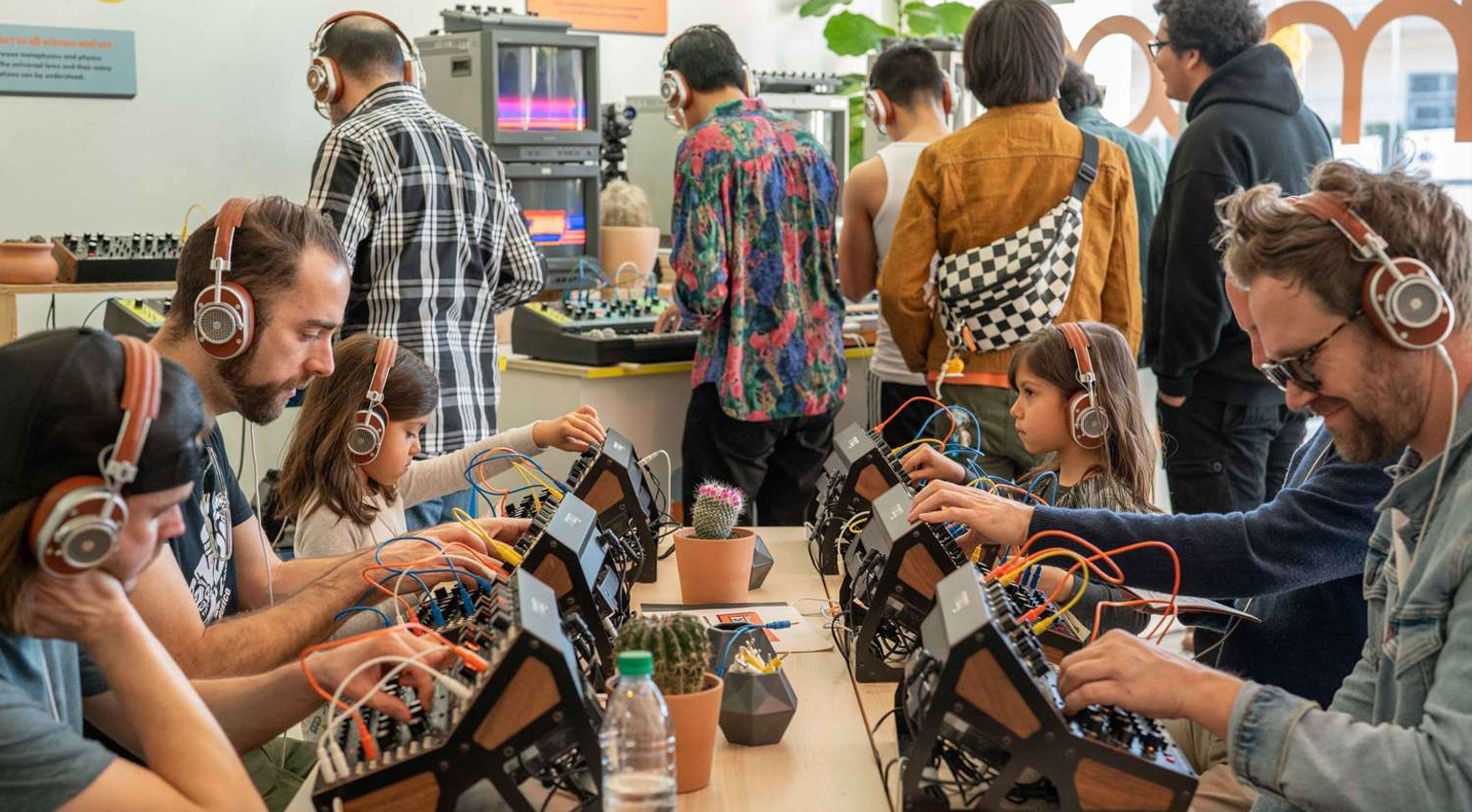Moog Music has put together a number of bundles that feature various combinations of their desktop-based semi-modular synthesizers. Together these create a fantastically modular and interconnected synthesizer studio.
The Moog Sound Studio 3 includes three synthesizers, the Mother-32, DFAM and Subharmonicon. The Mother-32 is a brilliant, single-oscillator analogue monosynth with that classic ladder filter, sequencer and fully modular patchbay. The DFAM works in a very animated percussion synth for linearly sequenced drum sounds that sync to the Mother-32’s sequencer. The Subharmonicon is a challengingly creative generator of melodic intervals and sequenced rhythms that takes you out of regular music-making space and into something entirely out there.
However, lumping three great synths together is not the whole story. Moog sees this as an opportunity to curate an entire music-making system. The Sound Studio comes with a three-tier frame for mounting the synths together. There’s a cool little mixer that lets you combine the outputs and also provides power distribution so you only need one plug. You get a bundle of patch cables, a cable holder and a booklet filled with patch possibilities and roadmaps for exploration. And in order to set the perfect scene, you also get some original artwork, cut-out decorative pieces and a game to help you make modular decisions.
You can feel the love with which these bundles were put together, and it forms a beautiful collection of retro-styled instruments that would look as awesome in your living room as it would in your studio.
Street Price: $1,699
moog.com
